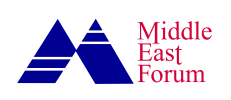Negotiations between representatives of the Syrian Democratic Forces (SDF) and the new authorities in Damascus over the future of the U.S.-backed Kurdish forces and governance in the northeast appear to be deadlocked. Thomas Barrack, simultaneous U.S. ambassador to Turkey and special envoy to Syria, visited Damascus this past week, meeting with Syrian interim President Ahmed al-Sharaa and SDF commander Mazlum Abdi in an effort to identify common ground. However, his involvement has further complicated matters for Syrian Kurds.
The SDF and al-Sharaa’s government signed a deal in March to integrate the semi-autonomous northeastern Syria and its armed forces into the structure of the Syrian state.
The SDF and al-Sharaa’s government signed a deal in March to integrate the semi-autonomous northeastern Syria and its armed forces into the structure of the Syrian state. While the SDF and Damascus have implemented aspects of the agreement, it is difficult to envision that they can overcome remaining major obstacles before the end of 2025—a deadline that is now likely to be extended.
A central point of contention between the two sides is the integration of the SDF into the country’s new defense structure. For the Syrian government, integration entails the disintegration of the SDF as a unified entity, with its fighters absorbed individually rather than collectively. The SDF opposes this approach and seeks to maintain its institutional cohesion within any future military framework.
Barrack says Washington remains committed to ensure the SDF integration happens in “a respectful way,” believing that the new Syrian government is taking all the necessary steps to facilitate the process. In reality, however, the Syrian government is not taking any such steps.
When the top U.S. diplomat in Syria states that “It is difficult for the SDF to come to the conclusion that the only future path for them is Damascus,” it signals al-Sharaa that Washington no longer backs its Kurdish partners, giving the Syrian government a green light to pressure and intimidate the SDF.
In 2003, L. Paul Bremer, the U.S. administrator overseeing Iraq, sought to disband the Kurdish Peshmerga forces in response to demands from Shi’ite factions. However, Iraqi Kurdish leaders opposed the move and successfully secured the Peshmerga’s integration as a core component of Iraq’s national defense system. Years later, the Peshmerga became a U.S. partner in the fight against the Islamic State.
Similarly, Syrian Kurds are unlikely to relinquish their arms. Recent massacres targeting the Alawites, along with attacks against the Druze and Christian communities, have heightened Kurdish skepticism regarding Damascus’s ability and willingness to protect them.
[The SDF’s] continued existence could serve as a valuable asset to the broader Syrian military, which is struggling to build a capable force.
Despite his newfound affinity for Syria’s Islamist leadership, Barrack should be cautious not to jeopardize what has been a successful partnership between the United States and Syrian Kurds, which was underscored by the Pentagon’s allocation of $130 million in its 2026 budget in support of the SDF’s ongoing campaign against Islamic State remnants.
With U.S. support, the SDF has, over the last decade, built a defense structure that includes highly trained special operations forces, counterterrorism units and local police forces. Its continued existence could serve as a valuable asset to the broader Syrian military, which is struggling to build a capable force.
Maintaining the SDF as an intact entity is compatible with efforts to build a unified Syrian military. The United States endorsed the integration of foreign jihadist fighters into a separate unit within Syria’s military. At a minimum, the same approach should be applied to the SDF. In a context where Washington and Damascus accommodate jihadists and extremist elements but marginalize moderate and liberal actors, it is imperative that common sense prevail.








